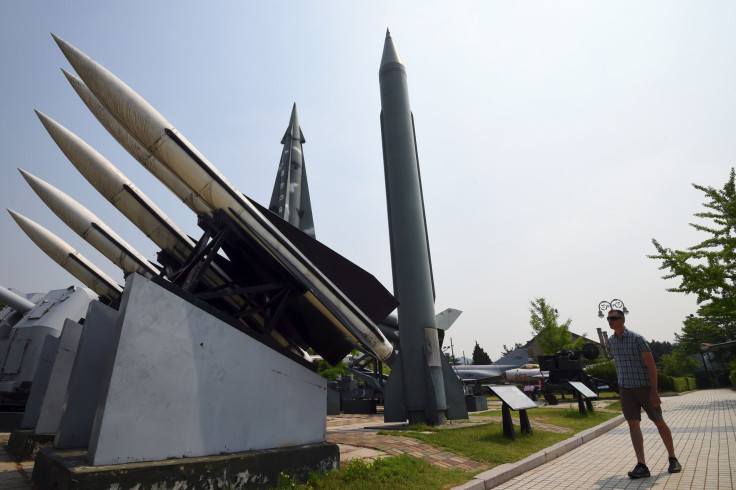What Is A Scud Missile? North Korea Test-Fired Soviet-Designed Ballistic Missile In Its Third Test In Weeks

North Korea fired a short-range ballistic missile off its east coast Monday morning, which is said to have landed in Japan’s economic zone where fishing and cargo ships are active, the Japanese government and the South Korean military said, according to a report.
"This launch is an extremely problematic act for the safety of airplanes and ships and is clearly violating the UN resolution. The repeated provocative acts by North Korea are absolutely not acceptable," Japan's Chief Cabinet Secretary Yoshihide Suga said in a statement, reported CNN.
Read: Kim Jong Un Supervises Test-Fire Of New Anti-Aircraft Weapon
The missile appeared to be a Scud-class ballistic missile which flew about 280 miles before landing in the Japanese waters. U.S. officials said it flew for about six minutes. The missile was fired at 5:39 a.m. local time (4:39 p.m. EDT Sunday), from an area near Wonsan, Kangwon Province on North Korea’s east coast, according to a statement from South Korea’s Joint Chief Of Staff.
"It flew about 450 kilometers (280 miles)," the statement said, CNN reported. "South Korea and the United States are currently closely analyzing for additional information. Our military is closely monitoring North Korean military and maintaining readiness posture," the report added.
North Korea has repeatedly defied a UN resolution banning all missile and nuclear activities and has increased the number of tests in the last few months. Monday's test was the seventh time in two months North Korea fired a ballistic missile.
The short-range ballistic missile that North Korea fired on Monday was assumed to be a Scud series missile that was originally designed by the Soviet and then developed into a weapon by Nazis. Scud was used to refer to a specific missile by NATO during the cold war, "the R-11, a Soviet theater-range weapon intended to strike targets in Western Europe," according to Air & Space Magazine.
"Scuds were manufactured by the Votkinsk Machine Building Plant from 1959 to 1984. Today, however, 'Scud' is like 'Kleenex' and 'Xerox,' brand names that are used to refer, generically, to all similar products. In this case, the product is any single-stage, storable-propellant military rocket with a range of between 186 and 372 miles," the magazine reported.
Moreover, the magazine also specified that all Scud-derived missiles are "mainly terror weapons."
On Monday, South Korea and Japan protested the missile launch. The recent missile tests from North Korea indicate that it has been making progress towards developing missiles capable of carrying warheads and also nuclear weapons that can reach U.S. military bases, observers have said.
In March, North Korea launched four missiles at once, of which three landed within the range of Japan’s economic zone. The launches raised serious concerns that the North Korean government, led by Kim Jong Un, has developed the ability to pose a greater threat to its neighbors and its weapons have the potential to overwhelm missile defense systems.
The White House said that President Donald Trump had been briefed on the launch of the missile.
White House says Trump has been briefed on NKorea missile launch that landed in Japan's EEZ
— Julia Macfarlane 🏴🇮🇩 (@juliamacfarlane) May 28, 2017
When asked about the consequences of a military conflict with North Korea if diplomacy failed, U.S. Defense Secretary Jim Mattis warned Sunday it would "probably be the worst kind of fighting in most people's lifetimes."
"The North Korean regime has hundreds of artillery cannons and rocket launchers within the range of one of the most densely populated cities on Earth, which is the capital of South Korea," Mattis told CBS News program "Face the Nation" on Sunday.
"And in the event of war, they would bring danger to China and to Russia as well," he added.
© Copyright IBTimes 2024. All rights reserved.






















